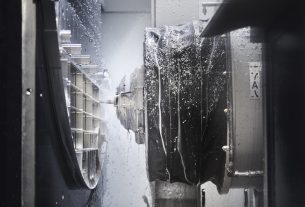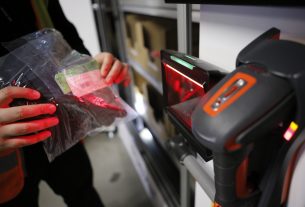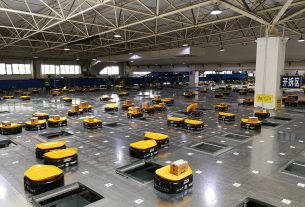The industrial robotics sector continues to experience strong growth, with operational stock at approximately four million robots according to statistics from the International Federation of Robotics. Improvements in robotic grippers have helped accelerate industrial robot uptake, but is there room for further development? Here, Ross Turnbull, Director of Business Development and Product Engineering at ASIC design and supply company Swindon Silicon Systems, explores.
Whether it’s moving large, heavy goods from point A to point B or assembling something small and fragile, industrial robots can be useful for a wide range of tasks. To give them the ability to hold and manipulate objects on their own, many robots will feature one or more grippers.
But it isn’t as simple as directing the gripper to just open or close. These robots must be able to work with objects of all shapes and sizes and materials of different hardnesses — and adapt accordingly.
This can be a challenge. The gripper needs to be able to sense the object to pick it up quickly and accurately, holding it securely to prevent it from being dropped. But it cannot close too tightly, as this could impair the gripper jaws themselves or damage fragile products. It’s also important to consider the electronics assembly. Thin connector wires in small electronic components can be easily bent and damaged through poor handling. It’s these kinds of problems that gripper manufacturers are keen to avoid.
To prevent damage while ensuring proper operation, robotic grippers need to have at least one sensor. It’s imperative that these sensors have both accuracy and precision to move, hold and assemble objects efficiently. So, how can we build sensors capable of this?
Ensuring proper position
For the gripper to be able to move accurately, it needs to know its exact position to the same level of precision. This is where position sensors come into play.
There are a couple of different types available: inductive and optical. Inductive position sensors rely on electromagnetic induction for non-contact detection of metallic objects. Conductive targets cause disturbances in the magnetic field, which can then be detected by the sensing element. Optical position sensors, in contrast, make use of an LED and photodetector, with an optical scale to measure linear displacement at very high accuracy.
Measuring force
Force or torque sensors are another important sensor type. While humans can naturally feel forces — for example, when pushing two objects together — a robot lacks this sensation. Integration of a torque sensor can help give robots ‘feeling’. These typically make use of strain gauges, which convert pressure into a measurable electrical signal. Multiple gauges can be combined to determine not only the intensity but also the direction of the force. The result is a robot that can handle even fragile materials or precisely tighten a screw without going too far to cause damage to the product.
Determining proximity
The last key type for discussion here is the proximity sensor. These are particularly helpful to check the angle of the jaw grippers for accurate movement, and can even provide part verification while the part is still inside the gripper.
Proximity sensors for this application are commonly inductive. Using the principles of electromagnetism and Eddy currents, the sensors can detect the metal of the jaws themselves or a metal target attached to the jaws.
Enhancing sensor systems
Whether systems contain just one of these sensor types or a combination, they’ll still have something in common: at least one or more ICs. The aforementioned sensor types will typically produce an analogue signal output. For this signal to be interpreted by the rest of the robot or industrial control system, it must first be digitised.
The necessary processes of signal amplification, processing and digitisation may be performed by a standard off-the-shelf IC. But for manufacturers looking to set their sensor apart from the rest, there’s a better solution available.
This takes the shape of an Application Specific IC, or ASIC. This is a completely bespoke chip that has been designed uniquely to fit the specific demands of the application — in this case, a robotic gripper.
The result of bespoke design means the IC can be fully optimised for superior performance. An ASIC designer will work closely with the manufacturer to discuss the current sensor system and identify the best areas for improvement for maximum benefit. For example, sensor-specific processing functions can be included to improve signal quality and minimise noise to ensure the accuracy of data and therefore movement of the robot. Industrial grippers working with extremely small components such as printed circuit board assemblies will benefit from the enhanced precision offered by an ASIC.
Speed can also be improved for reduced latency and real-time decision-making. This is particularly important for robots working in a collaborative environment with humans, who may need to make quick decisions to avoid collisions or other accidents when working in a non-predictable environment.
Products are growing in complexity while shrinking in size, making their manufacture more and more challenging. But levelling up plant machinery can help. Custom ICs can help alleviate manufacturer concerns around precision and reliability of their industrial robots, providing the dexterity and capabilities required for modern manufacturing.





